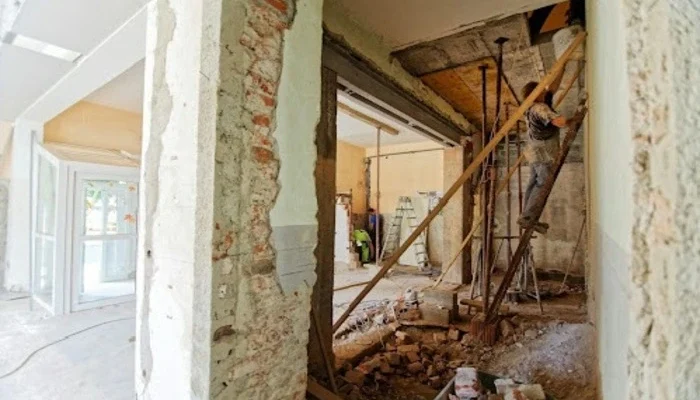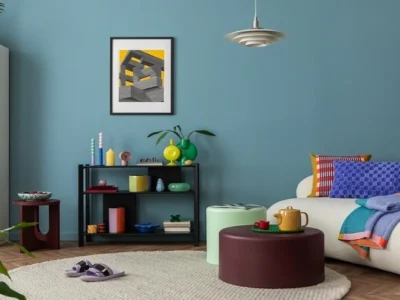Are you sick of living in a house that doesn’t feel like yours? Home renovation can be a transformative experience, allowing you to create a space that perfectly reflects your personality and lifestyle.
In this blog, we’ll walk you through the process of planning a successful home renovation. From setting a budget to choosing the right materials, we’ll provide practical tips and advice to help you achieve your dream home.
Defining Your Renovation Goals
The first step in any home renovation is determining exactly what you hope to achieve. Every renovation should start with a clear set of goals. Are you looking to add square footage by finishing your basement? Is your kitchen outdated and in need of new appliances and cabinetry? Or maybe your priority is to increase energy efficiency throughout your home. Identifying these goals early on will help you focus your time, energy, and budget in the right areas.
It’s also important to think about how these changes will impact the overall functionality and value of your home. While cosmetic updates can make your home look better, you might also want to consider practical changes like adding more storage or upgrading systems such as plumbing and electrical. Your goals should align with both your current needs and any future plans you have for the space.
Focusing on Key Areas of the Home
Focusing on high-impact spaces like the kitchen and bathroom will help you get the most return on your investment. These are the rooms that are used most frequently, and they tend to have the biggest influence on a home’s overall value.
If you’re planning a bathroom remodeling project, consider not only updating the fixtures but also reconfiguring the layout to improve functionality. Replacing outdated showers, sinks, and toilets with more modern, efficient models can significantly improve the experience of using the space, while also enhancing its overall appeal. Bathroom upgrades are known for adding long-term value, making them a smart investment for homeowners.
Setting a Realistic Budget
No home renovation can move forward without a clear and realistic budget. Your budget will determine the scope of your project, the quality of materials, and the professionals you hire. Take the time to research and plan your finances carefully. Start by understanding what your desired renovations typically cost, and then add in a cushion for unexpected expenses because they do happen.
Homeowners often make the mistake of underestimating costs, which can lead to incomplete projects or settling for lower-quality materials. To avoid this, build a comprehensive budget that includes everything from labor costs to permits and materials. It’s also wise to prioritize the most important upgrades and be willing to compromise on smaller details if needed.
Hiring the Right Professionals
Hiring the right professionals can make all the difference when it comes to the success of your renovation. Whether you need a contractor, architect, or interior designer, it’s important to work with qualified individuals who understand your vision and can bring it to life. Look for professionals who are experienced in the specific type of renovation you’re planning and have a strong portfolio of work to showcase their expertise.
Communication is key during any renovation project, so you’ll want to choose someone who listens to your needs and keeps you informed every step of the way. Always request multiple bids and references before making your decision. And don’t hesitate to ask questions. This is your home, and you deserve to feel confident in the people you’re working with.
Maximizing Functionality
Beyond aesthetics, your home renovation should improve the overall functionality of your space. Think about how you currently use each room and whether there are opportunities to make it more efficient or comfortable. For example, if your kitchen feels cramped, opening up the layout to create more space for cooking and dining could greatly improve its usability. Similarly, adding built-in storage solutions in areas like the living room or bedroom can help reduce clutter and make your home feel more organized.
Functionality is about making your homework better for your day-to-day life. Focus on creating spaces that meet your family’s needs, whether that involves rethinking a room’s layout, improving lighting, or upgrading appliances. By concentrating on practical improvements, your renovation will have a lasting impact on your lifestyle.
Planning for Future Needs
When planning your renovation, it’s important to think about how your needs may change in the future. If you’re planning to stay in your home for many years, consider making improvements that will accommodate changes in family size, lifestyle, or mobility. This might involve creating a more accessible layout, adding extra rooms, or upgrading to energy-efficient systems that reduce long-term costs.
By planning for the future, you can avoid the need for further renovations down the line. It’s also a good idea to consider universal design features, such as wider doorways or step-free entryways, that can make your home more accessible for people of all ages and abilities.
Managing the Construction Process
Managing the construction phase of your renovation requires active involvement to ensure everything is going according to plan. While your contractor will handle the day-to-day work, it’s important for you to stay engaged and monitor progress. Schedule regular check-ins with your contractor to go over completed work and discuss any potential adjustments that need to be made.
Being present during the construction process allows you to catch issues early on and make decisions in real time. It’s also helpful to keep a written record of important conversations and changes to the original plans, so you can refer back to them if necessary.
Reviewing the Finished Project
Once your renovation is complete, take the time to thoroughly review the finished work. Walk through each room with your contractor and inspect all aspects of the renovation, from the craftsmanship to the materials used. Make a checklist of any minor adjustments or touch-ups that need to be made, and communicate them to your contractor before the final payment is made.
Ultimately, a well-planned home renovation is more than just upgrading your space; it’s about creating a living environment that serves your needs now and into the future. As you move through each phase of the project, take time to consider not only how the changes will improve your home today, but also how they will continue to meet your lifestyle as time goes on. What will make the biggest impact on how you live? Thoughtfully addressing that question can guide your decisions and lead to a renovation that’s as functional as it is timeless.
Choice Home Warranty George Foreman in 2024










Comments